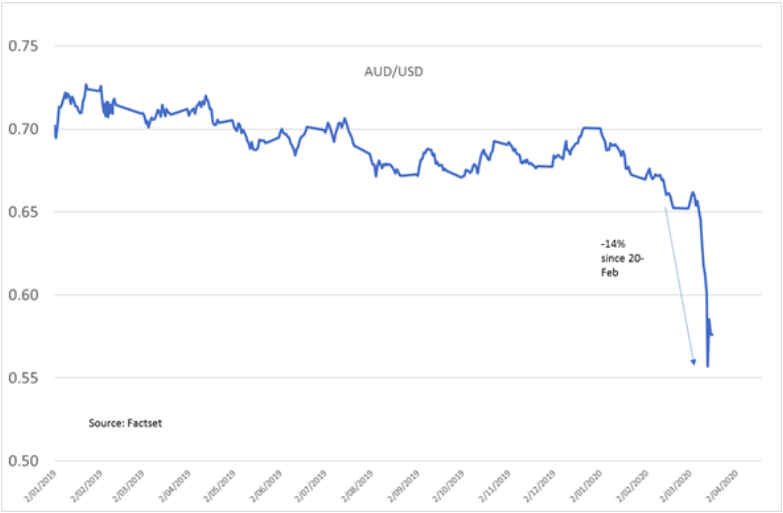What is the outlook for the AUD?
Equity markets continued to correct overnight across Europe and the US. The plethora of governmental actions continue to grow around the world, with the US Federal Reserve announcing more measures to improve market liquidity. This includes making its $700 billion quantitative easing program open-ended, new lending facilities, while asset purchases are being expanded to include commercial mortgage backed securities. However, one of the increasingly important fiscal stimulus packages in the making is the $1.8 trillion policy that, for the second night in a row, did not clear the US Senate. While many aspects of the Bill have bipartisan support, Democrats remain concerned that the US Treasury will have too much discretion in distributing the $500 billion in emergency federal loans. There is a risk the Bill will suffer further delays until Friday.
Meanwhile, for those investors with diversified portfolios including unhedged global equities, the Australian dollar has been playing a strong role in protecting portfolio returns. Since the peak of equity markets on 20 February, the Australian dollar has fallen against the US dollar by almost 14%, from around USD 0.67 to around USD 0.58. With US equity markets down a little under 35%, the Australian dollar has proved a significant partial offset to those falls. The Australian dollar is likely to continue to be under some downward pressure over coming weeks as the data reveals the extent of weakness in March (and Q2) data. If our central case for a peak in the disease within a couple of months, and a rebound in global activity through Q3 into Q4 unfolds, the Australian dollar is likely to begin tracking higher in H2 2020 and into 2021. For those looking to selectively rebalance their equity portfolios higher to re-establish tactical weights in the wake of sharp equity market corrections, this suggests they should consider doing this via hedged global equities or reallocating to the domestic equity market.
Australian dollar has fallen against the US dollar by around 14%

Source: Factset.
Be the first to know
I’ll be sharing Crestone Wealth Management's views as new developments unfold. Click the ‘FOLLOW’ button below to be the first to hear from us.
1 topic
1 contributor mentioned

